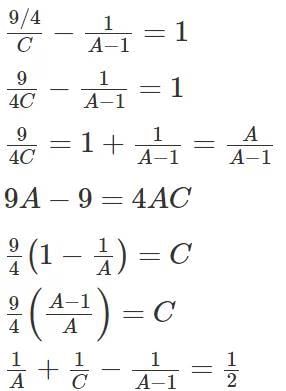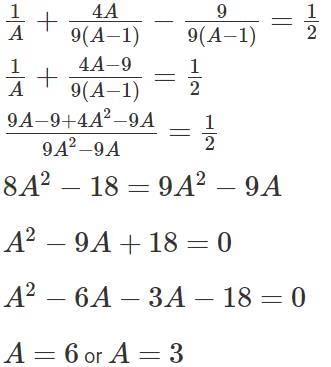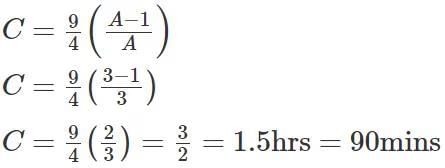CAT Previous Year Questions - Pipes and Cisterns | Quantitative Aptitude (Quant) PDF Download
2023
Q1: Pipes A and C are fill pipes while Pipe B is a drain pipe of a tank. Pipe B empties the full tank in one hour less than the time taken by Pipe A to fill the empty tank. When pipes A, B and C are turned on together, the empty tank is filled in two hours. If pipes B and C are turned on together when the tank is empty and Pipe B is turned off after one hour, then Pipe C takes another one hour and 15 minutes to fill the remaining tank. If Pipe A can fill the empty tank in less than five hours, then the time taken, in minutes, by Pipe C to fill the empty tank is
(a) 90
(b) 60
(c) 120
(d) 75
Ans: a
Sol: Let A, B and C be the number of hours taken by pipes A, B and C to completely fill (or completely empty) a tank.
So the fraction of the tank filled(or emptied) by them in one hour is 1/A, 1/B, 1/C
“Pipe B empties the full tank in one hour less than the time taken by Pipe A to fill the empty tank”
B = A – 1
“When pipes A, B and C are turned on together, the empty tank is filled in two hours”If pipes B and C are turned on together when the tank is empty and Pipe B is turned off after one hour, then Pipe C takes another one hour and 15 minutes to fill the remaining tank.”
This means, after pipe C worked for 2 hrs 15 mins (or 9/4 hrs) and the Pipe B draining for 1 hour, the tank got filled.“Pipe A can fill the empty tank in less than five hours” A = 3
2021
Q1: Two pipes A and B are attached to an empty water tank. Pipe A fills the tank while pipe B drains it. If pipe A is opened at 2 pm and pipe B is opened at 3 pm, then the tank becomes full at 10 pm. Instead, if pipe A is opened at 2 pm and pipe B is opened at 4 pm, then the tank becomes full at 6 pm. If pipe B is not opened at all, then the time, in minutes, taken to fill the tank is
(a) 144
(b) 140
(c) 264
(d) 120
Ans: (a)
Sol: Let A fill the tank at x liters/hour and B drain it at y liters/hour
Now as per Condition 1 :
We get Volume filled till 10pm = 8x-7y (1) .
Here A operates for 8 hours and B operates for 7 hours .
As per condition 2
We get Volume filled till 6pm = 4x-2y (2)
Here A operates for 4 hours and B operates for 2 hours .
Now equating (1) and (2)
we get 8x-7y =4x-2y
so we get 4x =5y
y =4x/5
So volume of tank =So time taken by A alone to fill the tank =
= 144 minutes
|
167 videos|238 docs|95 tests
|
FAQs on CAT Previous Year Questions - Pipes and Cisterns - Quantitative Aptitude (Quant)
| 1. What are pipes and cisterns in the context of quantitative aptitude? |  |
| 2. How do you calculate the time taken to fill a tank using multiple pipes? |  |
| 3. What is the formula for solving problems related to pipes and cisterns? |  |
| 4. Can pipes also drain a tank, and how does this affect calculations? |  |
| 5. What are some common pitfalls to avoid when solving pipes and cisterns problems? |  |






















